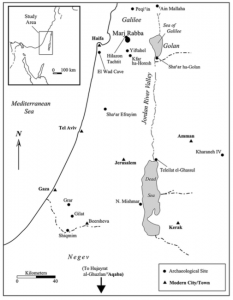 BASOR No. 376, November article, “Glass Vessel Use in Time of Conflict: The Evidence from the Bar Kokhba Refuge Caves in Judaea, Israel (135/136 C.E.),” by Max D. Price (Peabody Museum, Harvard University), Austin C. Hill (Anthropology Department, University of Connecticut), Yorke M. Rowan (The Oriental Institute of The University of Chicago) and Morag M. Kersel (Department of Anthropology, DePaul University, Chicago).
BASOR No. 376, November article, “Glass Vessel Use in Time of Conflict: The Evidence from the Bar Kokhba Refuge Caves in Judaea, Israel (135/136 C.E.),” by Max D. Price (Peabody Museum, Harvard University), Austin C. Hill (Anthropology Department, University of Connecticut), Yorke M. Rowan (The Oriental Institute of The University of Chicago) and Morag M. Kersel (Department of Anthropology, DePaul University, Chicago).
Endangered today, gazelles were both economically and symbolically important to the peoples of the ancient Near East. In various contexts, the gazelle has represented liminality, death, and rebirth. Gazelles held special significance in the southern Levant, where archaeologists have documented cases, spanning 20,000 years, of ritual behavior involving gazelle body parts. What roles did gazelles play during the Chalcolithic (ca. 4500–3600 B.C.), a period of both decreased hunting and ritual intensification? In this article, the authors discuss a unique find of burned gazelle feet at the site of Marj Rabba (northern Israel). The feet were found within a well-constructed building that was used for rituals and included two articulated human feet. The gazelle foot bones, the majority of which derive from adult male mountain gazelles (Gazella gazella), appear to reflect the remains of intentionally destroyed skins or severed limbs. This unique find highlights the evolving symbolic importance of gazelles, perhaps as forces of liminality, in Chalcolithic rituals.
